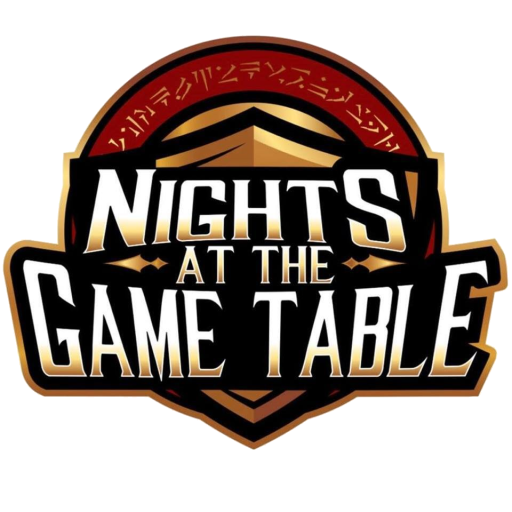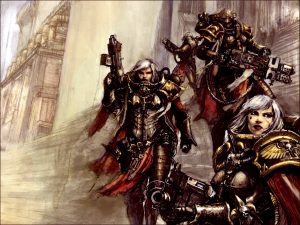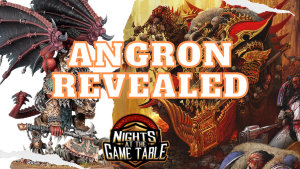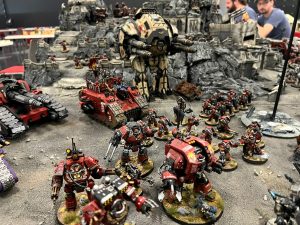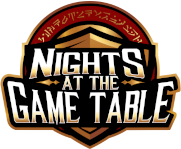Last week I put up a poll around various 40k internet groups, asking what kind of content you guys wanted me to discuss in my articles. Much to my surprise, the mating rituals of prehistoric Triceratops was not the winner of the day, but instead conceptual 40k won out by a large margin. To that end I’ve decided to discuss exactly that!
A common metric by which many players measure a unit’s effectiveness is by its ability to earn its points back by killing an equivalent or greater amount of enemy points than their cost. This may seem intuitive, given that if all 2000 points of your army “earn their points back” in this manner the enemy has no models left, so ergo you win. However, I find this idea incredibly misleading, and honestly inaccurate. Assuming your goal in 40k is simply to win (whilst having fun and being friendly yada yada, of course) then it would make sense to take steps towards winning before and during the game.

So, then the question becomes how does one win a game of 40k? Well, it completely depends on the mission and setting in which you are playing, but since this is a competitive 40k article, I will assume you’re playing within a tournament setting, and thus regardless of which format you choose ITC, ETC, NOVA, Adepticon, Grandma Dorthy’s 40k bonanza, the winner is typically the person who achieves the most mission points throughout the game. Generally speaking you achieve mission points by killing units, holding objectives, and completing certain tasks during the game, usually very few if any of which have anything to do with destroying a certain amount of enemy points. So, if winning is achieved by accruing points, and not destroying the enemy, then why use killing stuff as the metric by which you measure a units worth?
A unit’s “true” value is actually a fairly complex formula based on a summation of different aspects. Here are a few examples of what factors into a unit’s “true value”
- How much damage it can realistically do during the game
- How much space it takes up on the table
- Unit size (min/max)
- How specialized is the unit
- Does the unit’s performance depend on the enemy army
- How durable is the unit
- How fast is the unit
- How synergistic is the unit
- How adaptable is the unit
- Battlefield Role
- Redundancy

These are just a few of many criteria used in the valuation of a unit, and just to make it more complicated, not all of the criteria carry the same weight. Furthermore, what may be valuable to one unit, could be detrimental to another. For instance, a screening unit of gaunts wants to be as big as possible to occupy as much space as they can, whereas a solo Blood Angel Captain with Thunder Hammer and Storm Shield really does appreciate his single 32mm base, so that he can squeeze into tight spaces with his deep strike/upon wings of fire.
Some units have nearly 0 killing power, but are still valued as “good” units. Let’s take a look at the humble rhino- one of the most iconic and useful units in 40k. It doesn’t kill anything. It instead makes up it’s value through its synergy, durability, and adaptability. Synergistically, it transports your units to keep them safe in the early turns of the game, and it reduces your drop count when you stuff a bunch of characters inside to help ensure you get the +1 to go first. Durability wise, it boasts the classic T7 10 wounds 3+, which is nothing overly impressive, but then when you consider the fact that after units get out of it your opponent is nearly completely disincentivized to shoot it, its stock goes way up. And finally, its adaptability. Once it’s done transporting units, its functionality is far from over. You can use rhinos to charge potentially problematic units to keep them from doing what they want in the upcoming turn (also in part thanks to its durability). They also make for great overwatch soakers, to help your assault units make it safely. Finally, they make excellent back field objective holders since they don’t just roll over and die like 10 cultists.

A unit’s role in army contruction also plays a huge part in why or why not to take them. Units like razorwing flocks in Dark Eldar are up there for lowest point per wound ratio in the game (12 points for 4 wounds=3 points per 1 wound). Yet, all the Dark Eldar players seem to be favoring warriors over them for their screening units (6 points per wound). If the goal of a screen is to be as cheap as possible, so when they inevitably die on the front line you don’t lose as much, wouldn’t you want the cheapest point per wound? Well, it’s not quite that simple.
While the points per wound of a razorwing might be cheaper than both wracks and warriors, other factors apply such as minimum squad size. Razorwings are minimum 3, whilst warriors are minimum 5, meaning the cheapest unit of birds you can take is 36 vs 30 for the warriors. So, pragmatically a razorwing unit is more expensive than a warrior unit. It doesn’t end there though. When you consider the warrior unit is a troop choice which you need to take to fill a battalion, then the value of additional screening units in the form of razorwings is simply redundant. The diminishing returns of screening units is very apparent, and unfortunately razorwings definitely get hit by that harsh reality. Poor birds.
![]()
These are just some of the many ways to evaluate a unit’s “true value” on the table. There’s no short cuts around it, and the deeper you dive into figuring out what a unit has to offer the more accurately you’ll be able to identify if it’s a unit worth including. Next week I’m going to cover how you can identify a unit’s worth on the table, in a game, and make decisions based around trading and exchanging units based on value as opposed to changing or exchanging points. If you enjoyed this article, and want to learn more about how to accurately evaluate units join Nights PRO, and become one of my personal 40k coaching clients!
